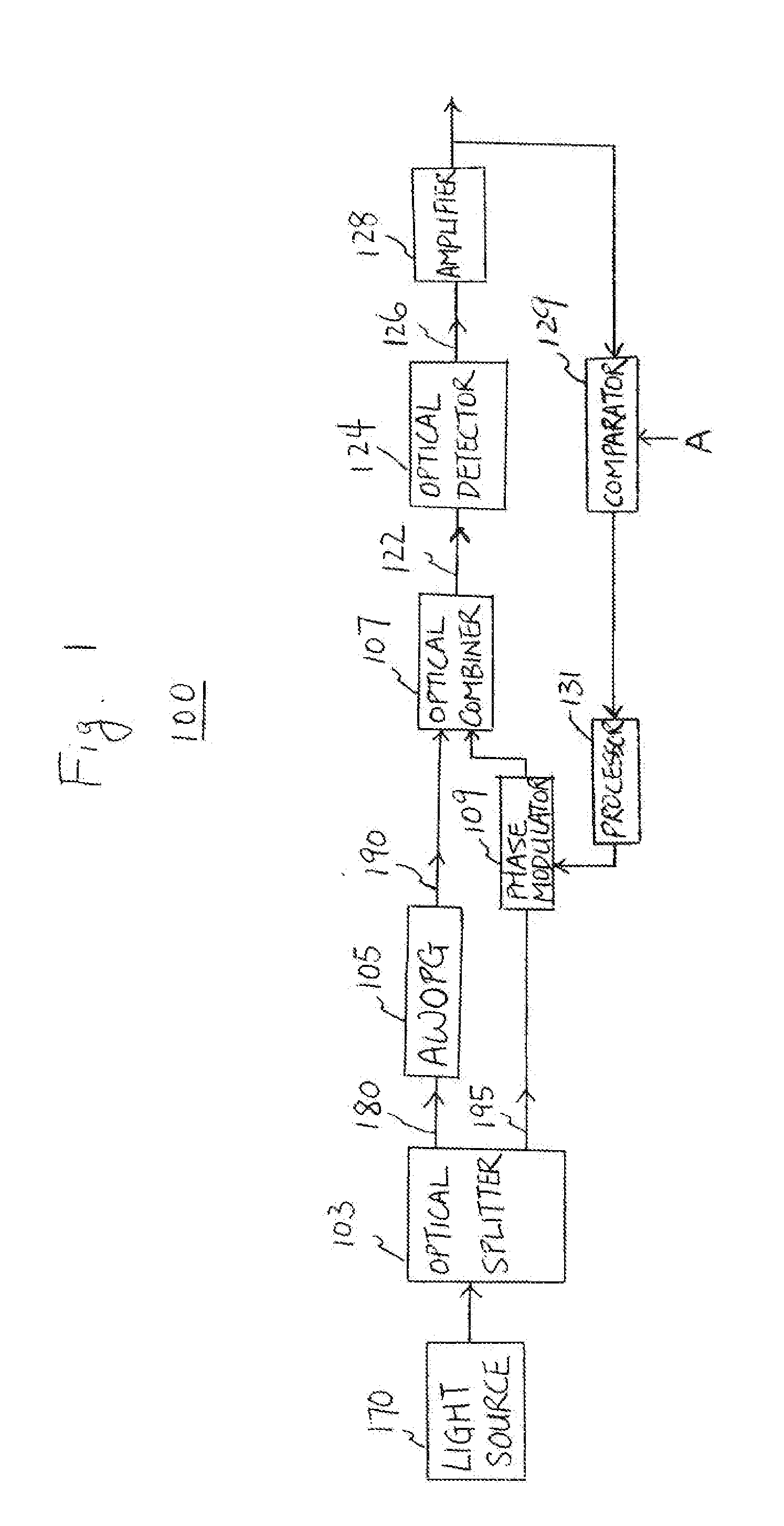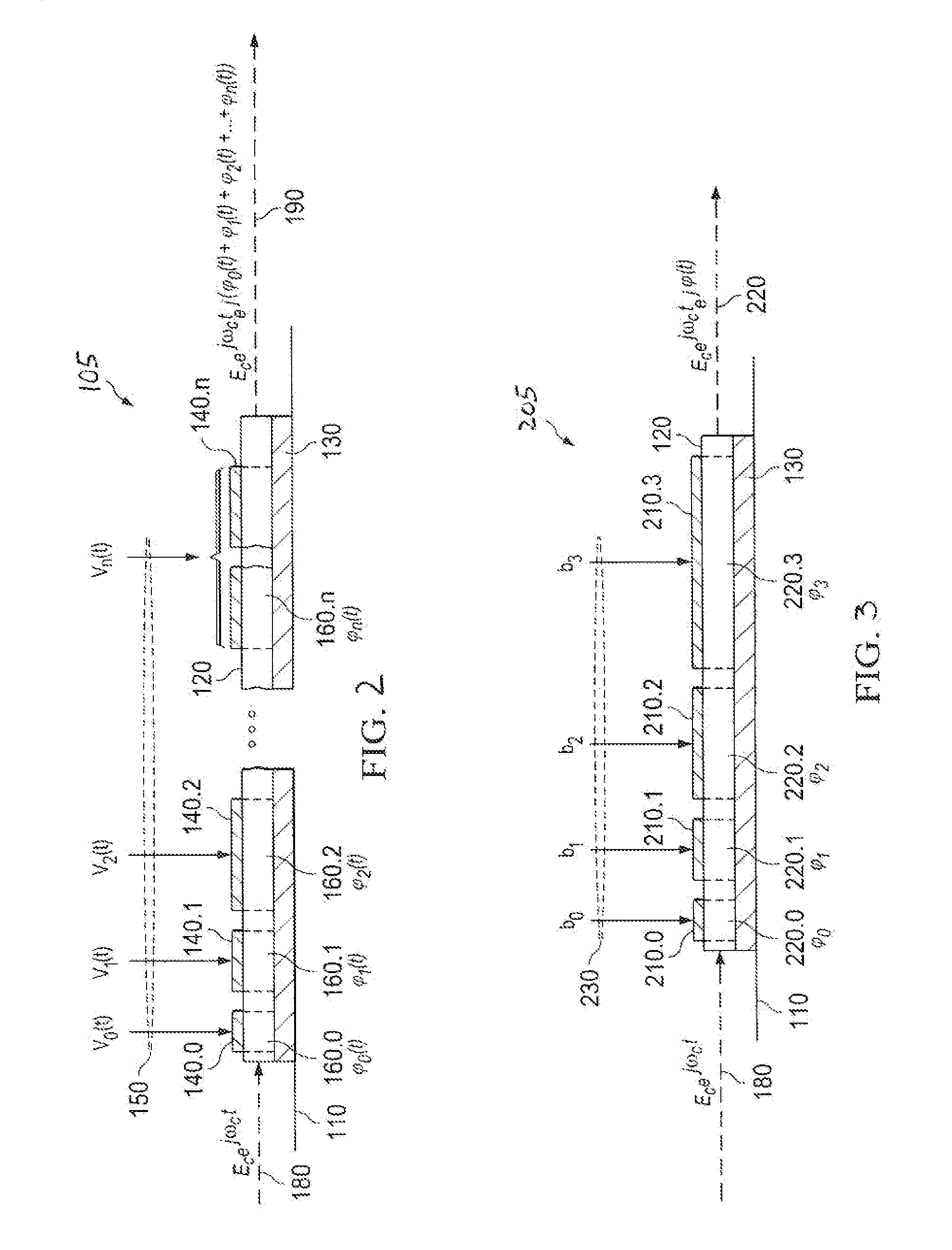Photonic Technique For Generating Arbitrary Waveforms
a photonic and waveform technology, applied in optics, instruments, electrical equipment, etc., can solve the problems of insufficient dynamic range of the awg designed with parallel amplitude-switching modulators, and the modulator corresponding to the least significant channel is too weak
- Summary
- Abstract
- Description
- Claims
- Application Information
AI Technical Summary
Benefits of technology
Problems solved by technology
Method used
Image
Examples
Embodiment Construction
[0012]FIG. 1 illustrates a radio frequency (RF)-photonic arbitrary wave generator (AWG) 100 embodying the principles of the invention. In one embodiment, AWG 100 is realized using arbitrary waveform optical phase generator (AWOPG) 105, which is different from a common AWG designed with parallel amplitude-switching-modulators. The latter has a lesser dynamic range, stemming from the fact that the signal from its amplitude modulator corresponding to the least significant channel would be too weak to be differentiable from the leakage of the stronger signal from its other amplitude modulator corresponding to the most significant channel.
[0013]As illustrated in FIG. 1, light source 170 in AWG 100 may be, e.g., a visible or invisible coherent optical source such as a laser diode. It provides an optical carrier, which is split by optical splitter 103 to form two identical optical carrier signals, denoted 180 and 195, respectively. By way of example, optical carrier signal 180, which is fe...
PUM
| Property | Measurement | Unit |
|---|---|---|
| phase | aaaaa | aaaaa |
| electrical waveform | aaaaa | aaaaa |
| phase shift | aaaaa | aaaaa |
Abstract
Description
Claims
Application Information
 Login to View More
Login to View More - R&D
- Intellectual Property
- Life Sciences
- Materials
- Tech Scout
- Unparalleled Data Quality
- Higher Quality Content
- 60% Fewer Hallucinations
Browse by: Latest US Patents, China's latest patents, Technical Efficacy Thesaurus, Application Domain, Technology Topic, Popular Technical Reports.
© 2025 PatSnap. All rights reserved.Legal|Privacy policy|Modern Slavery Act Transparency Statement|Sitemap|About US| Contact US: help@patsnap.com



